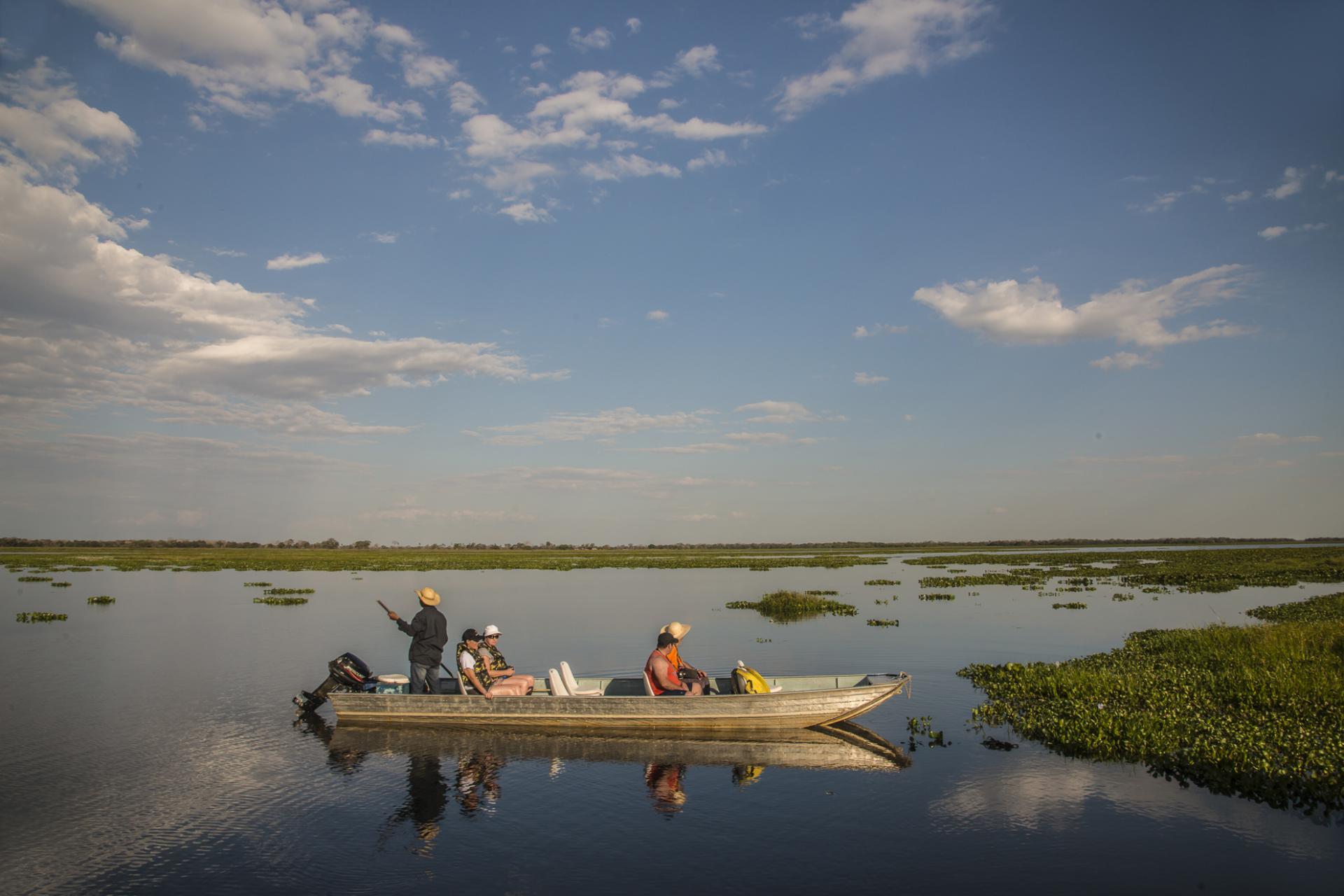Our Highlights in Mato Grosso

The state of Mato Grosso is located in the Midwest of Brazil and is considered Brazil's "Wild West". Mato Grosso is known for the Pantanal, one of the largest inland wetlands on earth, which consists of seemingly endless miles of flooded grasslands and wetlands. There is little infrastructure, and with just under 3.5 million inhabitants and an area of about 900,000,000 hectares (900.000 square kilometers), the area is very sparsely populated. Thus, a unique flora and fauna could be preserved, which is worth discovering for nature lovers. We present you our highlights in Mato Grosso, so that you are well prepared for the next Brazil trip through the "Wild West".
Cuiabá
Cuiabá is located in the border area with Bolivia and has been the capital of Mato Grosso since 1835. The city is the geographical center of South America, located 1,242.74 miles (2.000 kilometers) from both the Atlantic and Pacific Ocean. Its founding year can be dated to 1719, when gold was found in the area by the expedition troops, the so-called Bandeirantes, on the Rio Cuiabá. The name was derived from the Indian expression "Ikuiapá", which roughly means "place of the harpoon". Due to the gold discoveries, there was a lively influx of gold miners and other fortune seekers. However, the interest in living far away from any civilization remained low, so that the town remained a sleepy place for a long time. In the course of the 20th century, however, Cuiabá developed into a booming city with 550,000 inhabitants. Today, the city center offers visitors numerous museums, impressive churches, and a lively fish market. If you look around, you will find great live music, hats, boots, and saddles of real cowboys, excellent drinks made of coconut milk, and outstanding dishes from all over the world in Cuiabá. In addition, the heart of the city is still spared from tourist crowds, as many travelers only make a brief stopover before continuing on to the surrounding area. Cuiabá is the gateway to the Pantanal and the starting point for excursions into the savannah landscape of the Cerrado and the Amazon basin.
Pantanal
The Pantanal, also called Pantanal Matogrossense, is one of the largest inland wetlands on earth and was declared a UNESCO World Heritage Site in 2000. With an area of about 2,300,000 hectares (230,000 square kilometers), the wetland on the border with Bolivia is almost as large as the state of Michigan. A species-rich wetland biotope has developed in the many freshwater lakes, which are fed by numerous rivers and through which the Rio Paraguai flows. The Pantanal is the habitat of over 650 different bird species, about 120 mammal species, 260 fish species, and at least 2,000 plant species. The jaguar is one of the most impressive mammals of the area. Since it is not easy to spot the cat in the wild, there are guided jaguar safaris where you have a chance to spot the big predator. During these discovery tours, nature and animal lovers will also get to see other inhabitants of the Pantanal, such as hyacinth macaws, swamp deer, tapirs, or capivaras. The unique, species-rich wildlife and the natural lush green wetland landscape of the Pantanal enchant every visitor.
Chapada dos Guimarães
The small town of Chapada dos Guimarães is located not far from Cuiabá and has a charming old town with small alleys and rustic architecture. Particularly worth seeing is the ancient village church of Nossa Senhora de Santana do Sacramento, built in a colonial-baroque style by slaves in 1779. The mountain range of the same name and the national park make the heart of adventurers beat faster. Countless caves, peaks, waterfalls, rock formations, and a rich flora and fauna are waiting to be discovered. Visitors can also explore more than 50 archaeological sites and prehistoric fossils on numerous hiking trails. Thereby, the many waterfalls in the national park, such as the "Véu da Noiva", offer a refreshing bath for the hikers. From its highest point (86 meters) you can enjoy an outstanding panoramic view over the valley to Cuiabá. Canyoning and climbing are also possible in the mountains. So, if you are looking for pure action and adventure, you will find it in Chapada dos Guimarães.
Bom Jardim
A little further north, in the middle of Brazil's African-like savannah, lies the small village of Bom Jardim. With its crystal clear rivers, caves, and waterfalls, the place is considered a real must-see. The water of the Salobra and Triste rivers is crystal clear, due to the calcareous soil, and shimmers in beautiful shades of turquoise and blue. This attracts countless snorkelers wanting to discover the colorful underwater world. Who prefers land under their feet can observe hundreds of parrots at sunset at the Lagoa das Araras or macaws flying in pairs, which have their roost here. The birds live in palm trees around the lagoon and show their flying skills in the early morning hours and at dusk. Since the sights around Bom Jardim can only be reached by unpaved roads, we recommend a guided tour.
As you can see, the state of Mato Grosso is the scene of unique natural spectacles, which you will remember for a long time after your Brazil vacation. Small and tall adventurers alike will get their money's worth here and gain unforgettable experiences!
Sources: www.brasilien.de, www.brasiloo.de, www.franks-travelbox.com, www.wikipedia.org

